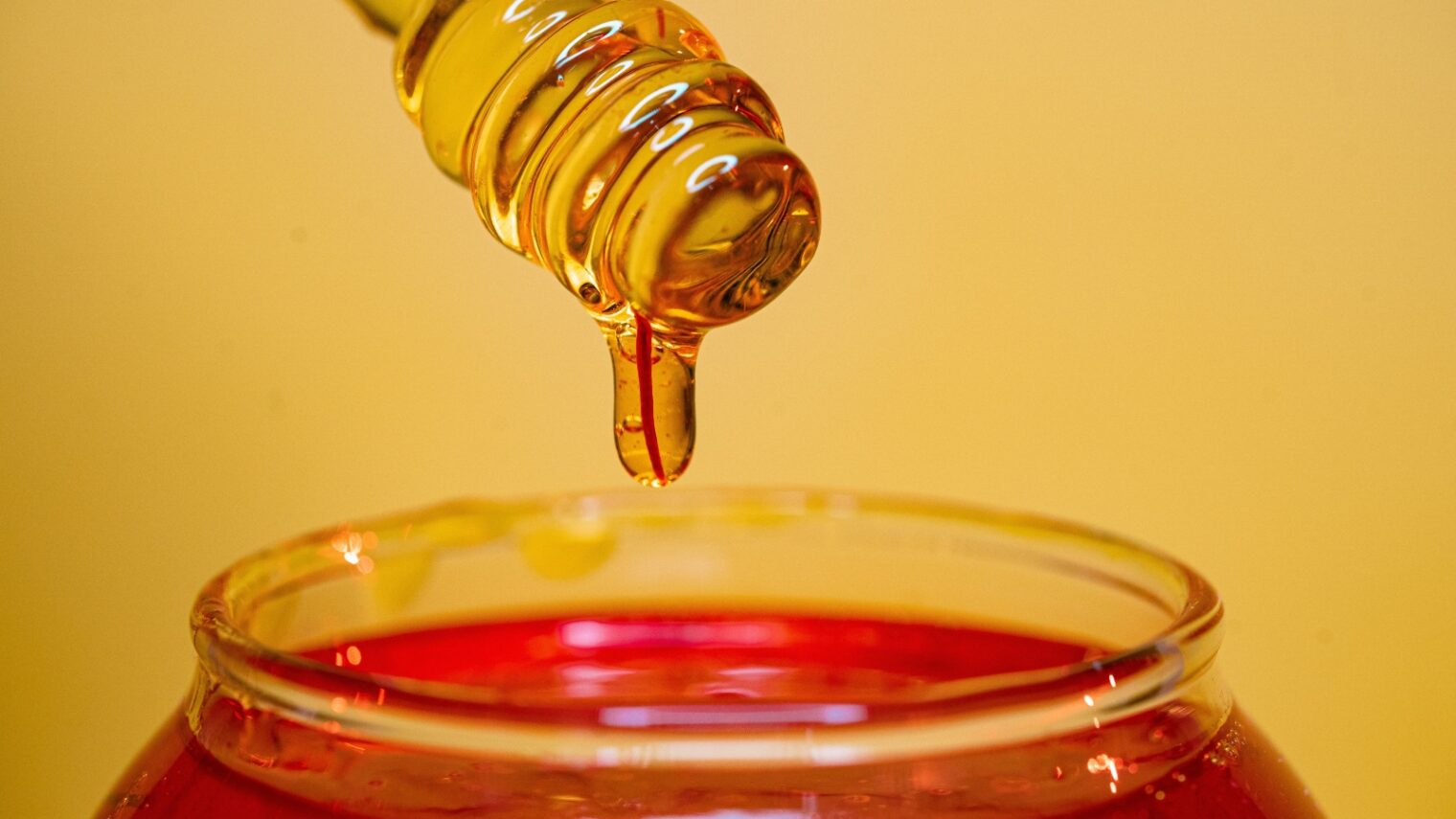Ofir and Efrat Dvash didn’t know when they were growing up on a farm that their life’s work would reflect the meaning of the family name.
“Dvash” is Hebrew for “honey” and the siblings’ new business, Bee.io, is all about making honey… without bees.

It’s no secret that bees are in trouble. A 2021 study found that 25 percent of known bee species have disappeared since the 1990s. The study notes that the roughly 20,000 bee species “are the most important group of insect pollinators” on Earth, contributing to some 85% of cultivated crops.
The problem, Ofir Dvash tells ISRAEL21c, is that only seven of those 20,000 species make honey. Farmers, hoping to maximize their bee bang for the buck, have focused almost exclusively on those seven, so their bees can do double-duty – pollinating fruits and flowers and making honey when they come home to the hive.
That’s led to a situation where honeybees are being manipulated unsustainably. For example, farmers artificially inseminate their bees rather than let them do what birds and bees do naturally.
“Fifteen years ago, the US could produce 70% of its honey consumption. Now it can produce only 30%. This is a huge environmental problem.”
“They’re choosing sperm from the same species. After generations of doing that, it’s made the bees very weak and sensitive to viruses,” Dvash says. “So, all of a sudden, you’ll come to a healthy beehive and all the bees are dead because a virus is attacking them.” The same viruses also infect wild bees.
As a result, 50% of the wild bees in Europe are now on the verge of extinction, Dvash laments. And those that remain get pumped with antibiotics, pesticides and other toxins dangerous to human health.
US farms often finish the year with just 50% of their original beehives. “Fifteen years ago, the US could produce 70% of its honey consumption. Now it can produce only 30%. This is a huge environmental problem,” Dvash notes.
Honey in huge demand
To make matters worse, the demand for honey has only been increasing as concerns about white sugar push consumers to healthier alternatives.
“Honey is the most loved ‘super food,’” Dvash says. “When you eat sugar, you get just pleasure but not much else out of it. Honey will help your health.”
The United States alone consumes some 400,000 tons of honey a year; worldwide it’s close to two million tons.
“The supply side cannot meet this demand,” Dvash notes, “so prices are rising fast. In the last 10 years, prices nearly doubled, making honey something like a premium product. We want to enable everyone to have different kinds of honey, different flavors, at reasonable prices.”
Part of the issue is that bees are not particularly efficient honey-makers.
“Twelve bees can produce just a single teaspoon of honey over their entire life,” Dvash explains. “One beehive can make up to 35 kilograms a year. So, how many beehives will you need for two million tons of honey?”
The reason they produce only a little is that honey is meant to sustain bees during the winter when there aren’t any flowers to get nectar from, Dvash explains.
“The trouble is, we’re taking their honey, so what happens now in winter? They die from hunger.”
Cultivated honey
Bee-io aims to solve this sticky problem by decoupling honey production from the bees’ main job of pollination.
Bee-io makes cultivated honey by mimicking the bees’ natural process. Nectar collected from plants is filtered and inserted into a biosynthesis machine where it’s mixed with specific enzymes and evaporated, resulting in honey. (The enzymes are produced using a fermentation process, making Bee-io’s product truly vegan.)

Bee-io’s honey has all the same vitamins, minerals and antioxidants as “real” honey but without the antibiotic additives.
“Because we can choose from which plants and flowers to make the honey, we can set the taste. Nature can’t do that,” Dvash adds.
Bee-io’s cultivated honey is also free from potential dangers if a bee picks up nectar from a poisonous plant.
“That’s why children under the age of one aren’t allowed to eat honey,” Dvash says. “Our honey can be consumed by children that age.”
Lower price
Bee-io’s machine is still in the design phase, but eventually the company plans to construct facilities in the United States, and later on in other countries, to produce large amounts of different varieties.
These cultivated honeys would cost less than their bee-made counterparts, including exotic types such as chamomile honey, coffee honey or even Manuka honey, which costs as much as $1,000 per kilo.

Bee-io, which has raised a total of $6.7 million, will get its honey into the market using a business-to-business (B2B) model where Bee-io will supply “clean raw material that food manufacturers can use in their own products” and a B2C model where Bee-io creates its own brands for customers to purchase directly.
Dvash hopes that commercial sales will begin in 2023 after passing regulatory hurdles, such as with the US FDA.
Farm-raised

The Dvashes grew up around bees in Moshav Hatzav near Gedera. “I’m the son of a farmer. We had a greenhouse and used different types of bees, but only for pollination,” Ofir Dvash tells ISRAEL21c.
He spent 12 years working with military products and later as CTO of GKI Group where he worked on technologies like CozyFlow, a family of products for parents, and Milk and Honey Distillery, Israel’s first whiskey distillery.
Efrat has a PhD in molecular genetics from the Weizmann Institute of Technology and directed the Breast Cancer Translational Research Laboratory at Tel Aviv Sourasky Medical Center.
So, how does cultivated honey taste? We couldn’t sample the fruits of Bee-io’s labor – Zoom doesn’t yet enable teleportation of physical products. But Dvash insists we would not know the difference.
That may be the sweetest news of all.
Get your sweet on here.

















